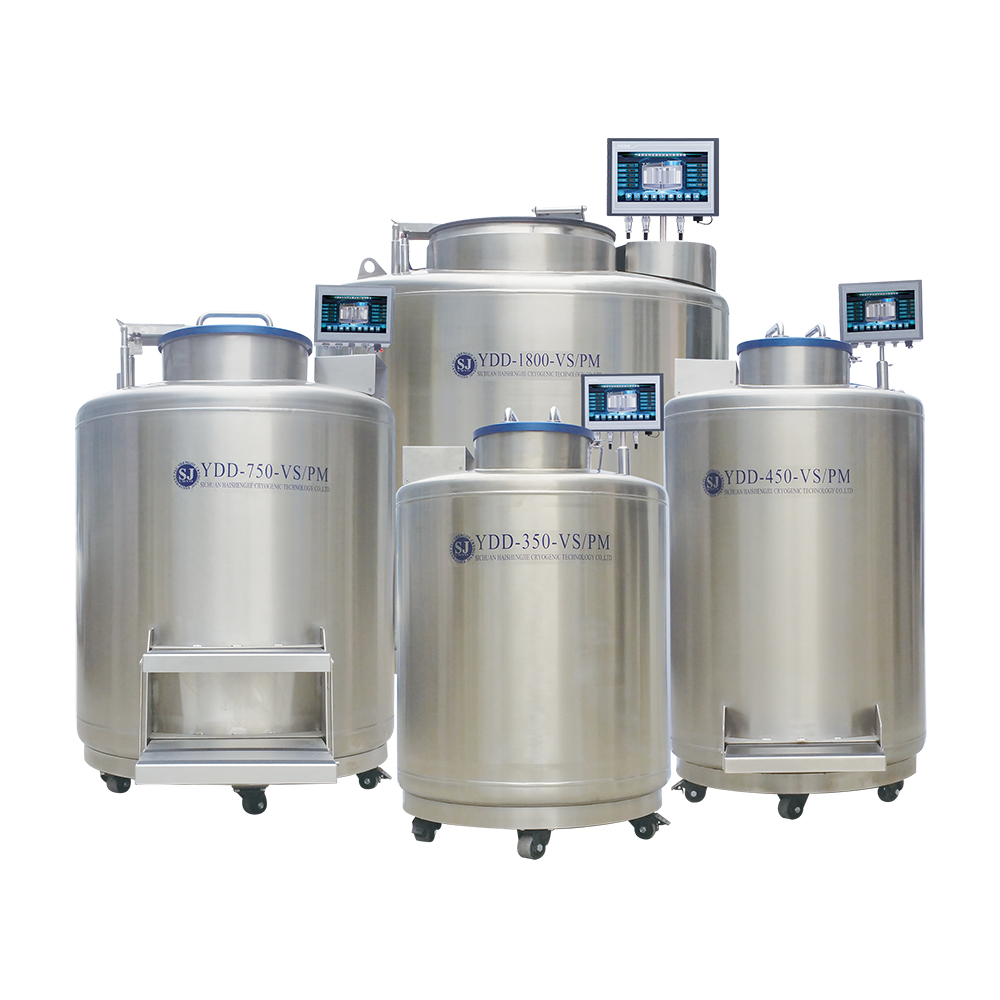Compressed gases and cryogenic liquids are stored in gas cylinders under high pressure, which can have several safety considerations to prevent injury and property damage. University units and departments with compressed gases and cryogens, including liquid nitrogen, are required to follow regulations for safe storage of gas cylinders and Dewars.
Proper storage of compressed gases and liquid nitrogen includes: liquid nitrogen freezers

Compressed gases are non-liquefied gases that do not become liquid at normal temperatures, even at high pressure. Liquid nitrogen, a cryogen, is a naturally occurring gas that becomes liquid at approximately 77 Kelvin (-196oC) and is colorless, odorless, non-flammable and non-toxic.
Training is required for any personnel handling or storing liquid nitrogen, and is recommended for those handling or storing compressed gases.
More information on safe handling and storage of compressed gases and cryogenic substances can be found on the Compressed Gases and Cryogenic Fluids page.
Contact the Building and Fire Safety Team at (206) 685-0341 with questions.
Environmental Health & Safety (EH&S) updated rabies information for University personnel...
The University of Washington has multiple locations where...
The University implemented the changes outlined...
Alumni, affiliates, visitors, and students with valid UW NetIDs are (at various times) not able...
Compressed gases and cryogenic liquids are stored in gas cylinders under high pressure, which...
Human blood and other potentially infectious materials may contain viruses referred to as...

Liquid Nitrogen Dewar Vwr © 20 UW Environmental Health & Safety Department | 201 Hall Health Center, Box 354400, Seattle, WA | Tel: 206.543.7262 | Fax: 206.543.3351 | ehsdept@uw.edu